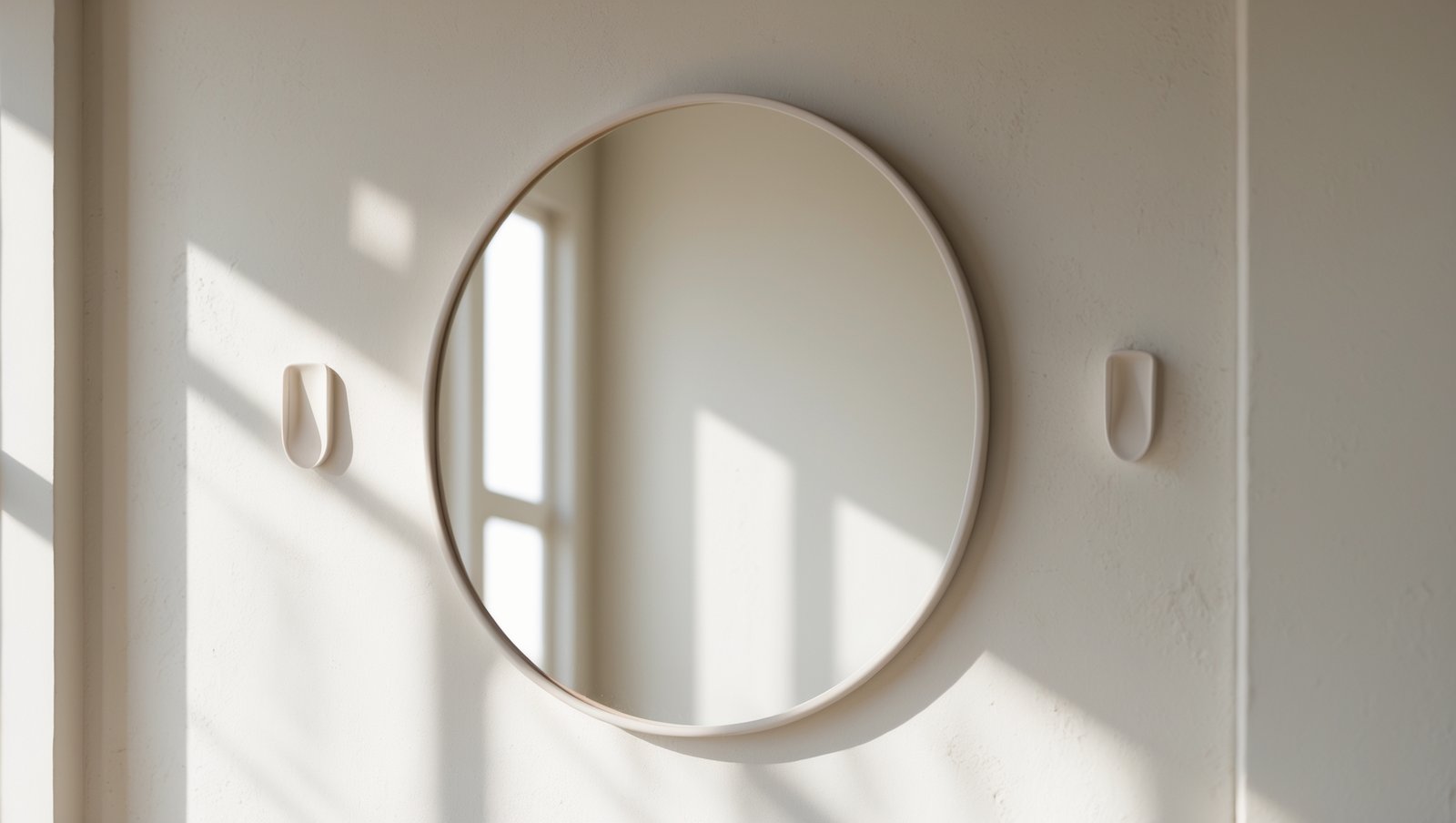Hanging mirrors on plaster walls without nails can feel impossible, but it doesn’t have to be! Whether you’re renting a, you’d want to avoid damaging the walls, or simply don’t want to do with the mess of drilling, there are plenty of ways to get the job done. I’ve faced this challenge myself and learned that with the right tools and techniques, it’s easier. In this guide, I’ll show you the best ways to hang mirrors securely, with no nails required. So, if I’m ready to tackle this project confidently, keep reading!
Why Hanging Mirrors on Plaster Walls Can Be Tricky
If you’re unfamiliar with plaster, it can be tricky and doesn’t work. Plaster walls are much different from drywall. The drywall is softer and can be drilled into with ease. Plaster, on the other hand, is more complex but more fragile. If you use nails or screws on plaster, it can crack doesn’t. That’s the last thing you want, especially if you’re renting!
The tricky part of plaster walls is that they don’t hold nails or screws well. You find it easy to damage the wall. If you try to hang something heavy on plaster with nails, you might see cracks appear. That’s why using the right tools and methods is so important. You need a solution that will support your Mirror without harming the wall.
What You You’ll Hang Mirrors on Plaster Walls Without Nails
Before the methods, let’s talk about the tools you’ll need. Thankfully, several great options don’t involve nails or screws. Depending on the size and weight of your Mirror, you can use one of these methods:
- Adhesive Hooks: These hooks are great for lightweight mirrors. They stick to the wall and don’t leave any holes behind.
- Picture Hanging Strips are adhesive hooks designed for pictures and mirrors. These strips hold more weight.
- Plaster-Friendly Adhesives: These adhesives are perfect for heavier mirrors. They stick securely without damaging the plaster.
- Tension Rods: This might sound unusual, but tension rods can support large mirrors and don’t require drilling.
Now that you know what you need, let’s dive into the details of each method.
Method 1: Using Adhesive Hooks
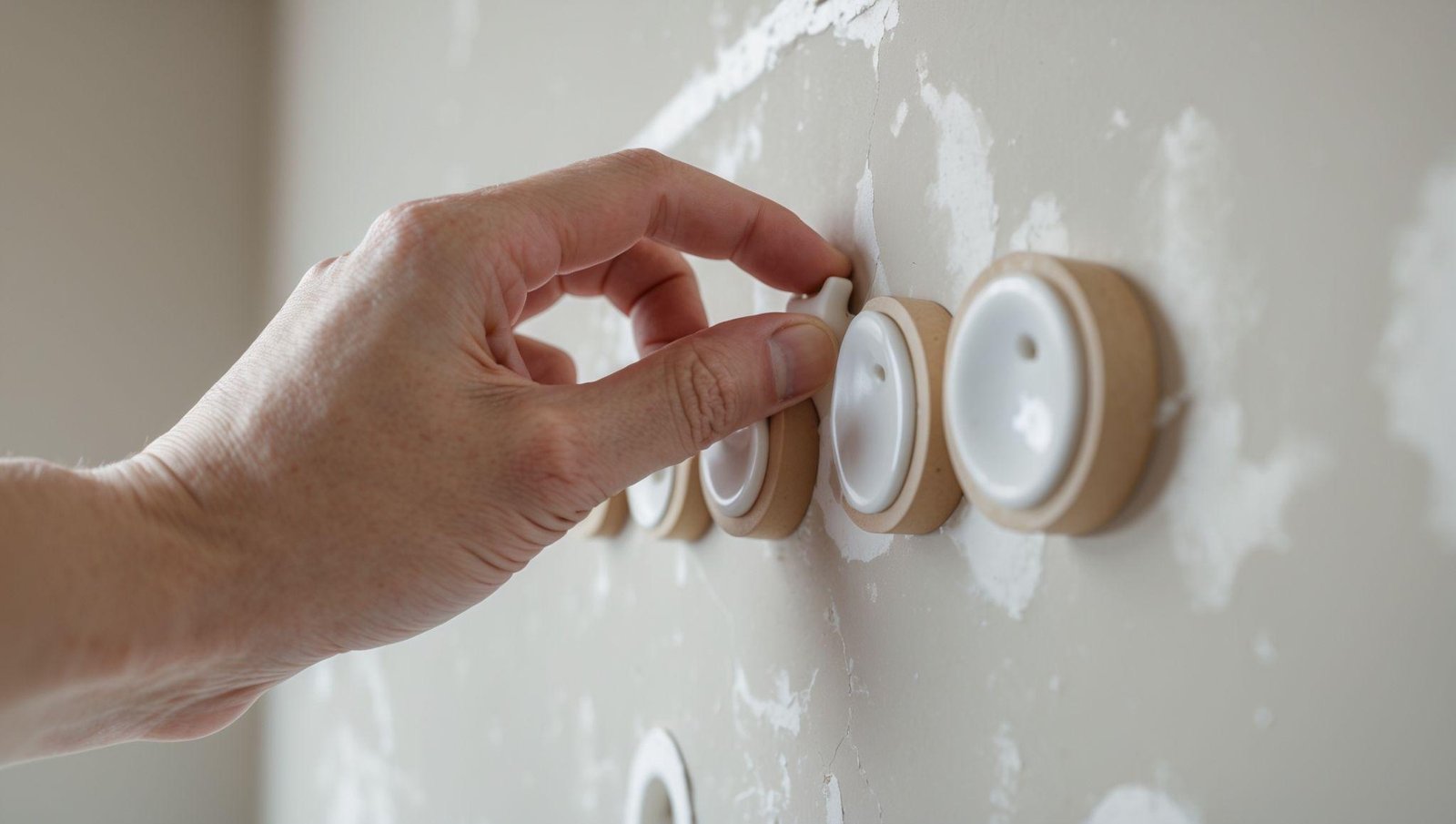
Adhesive hooks are easy to use and hold a surprising amount of weight for mirrors. They don’t require drilling or nails. If your Mirror isn’t too heavy, adhesive hooks are all you need.
How They Work: These hooks have a sticky backing. You press them against the wall, and they stick. They work best for lighter mirrors and frames.
Won’t-Step Process:
- Clean the Wall: Before applying the hooks, clean the area where you plan to place them. Use a clean cloth and some rubbing alcohol to remove dirt and oils.
- Apply the Hooks: Follow the instructions on the package. Most hooks need to be pressed firmly against the wall. Hold them in place for a few seconds to make sure they stick.
- Hang the Mirror: Once the hooks are in place, hang your Mirror. Make sure it’s level and stable.
- Check for Stability: Give your Mirror a little tug. If it feels stable, you’re good to go. If not, remove the Mirror and try again.
Tips for Best Results: Make sure the surface is dry and clean. Leave the hooks to settle for an hour before hanging anything on them.
When to Use This Method: This method works best for lightweight mirrors. If your Mirror is too heavy, you must try a different approach.
Method 2: Picture Hanging Strips
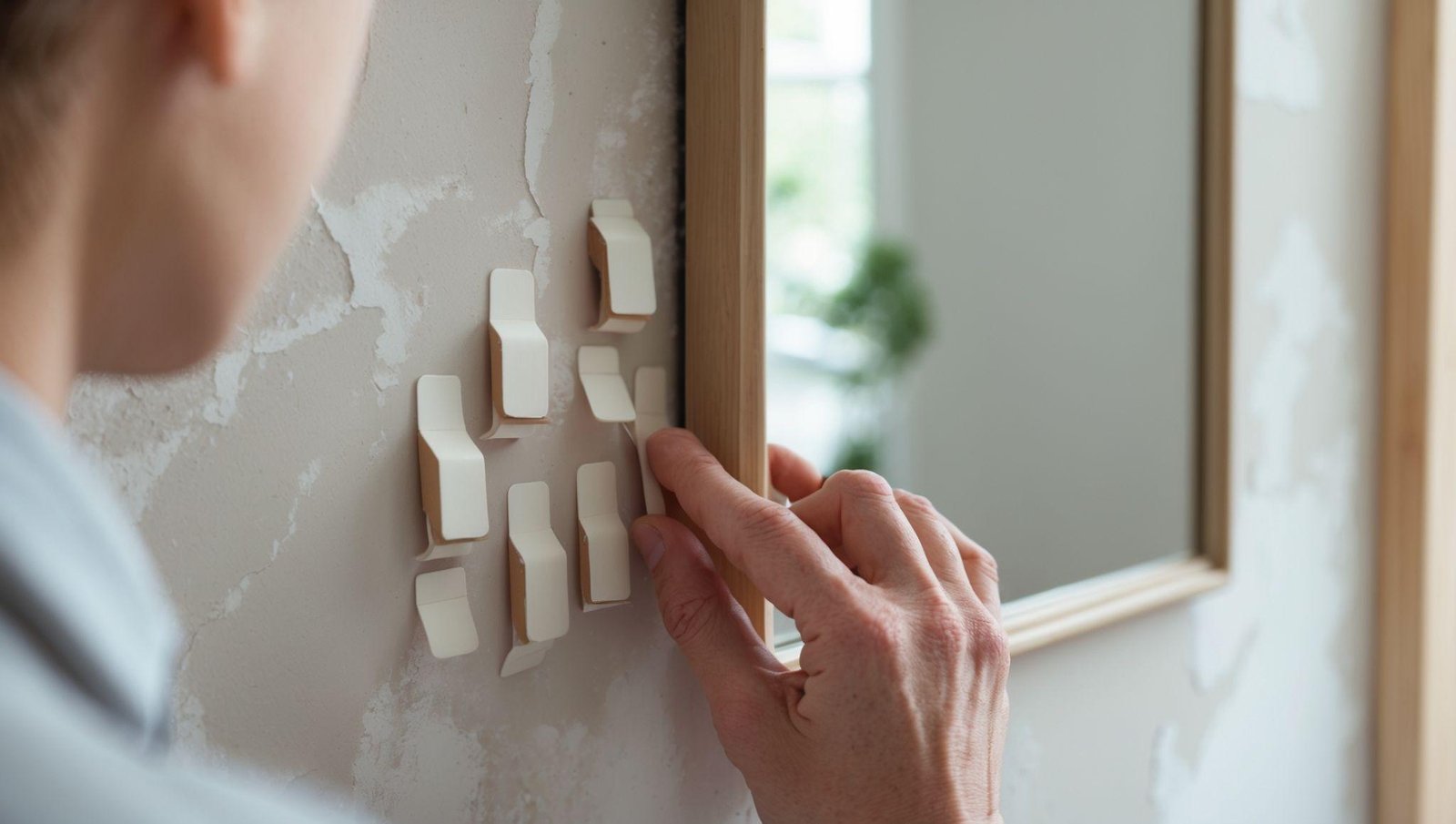
Picture hanging strips are a perfect solution for mirrors of moderate weight. They are like sticky strips that hold your Mirror in place without leaving any damage behind. They are super easy to use and don’t need nails or screws.
How They Work: These strips have adhesive on both sides. One side sticks to your wall, and the other sticks to the back of your Mirror. They are great for moderate-weight mirrors.
Step-by-Step Process:
- Choose the Right Strips: Pick the right strips for your Mirror’s weight. Picture hanging strips come in different sizes and weight capacities.
- Clean the Wall: Like with adhesive hooks, clean the area on the wall where you’ll place the strips.
- Attach the Strips: Stick the strips to the back of your Mirror and the wall. Press firmly to ensure a strong bond.
- Hang the Mirror: Attach the Mirror to the wall. Press the Mirror against the wall to lock the strips in place.
When to Use This Method: Picture hanging strips are ideal for mirrors weighing between 2 and 16 pounds. They can easily hold most standard-sized mirrors.
Method 3: Use of Plaster-Friendly Adhesives
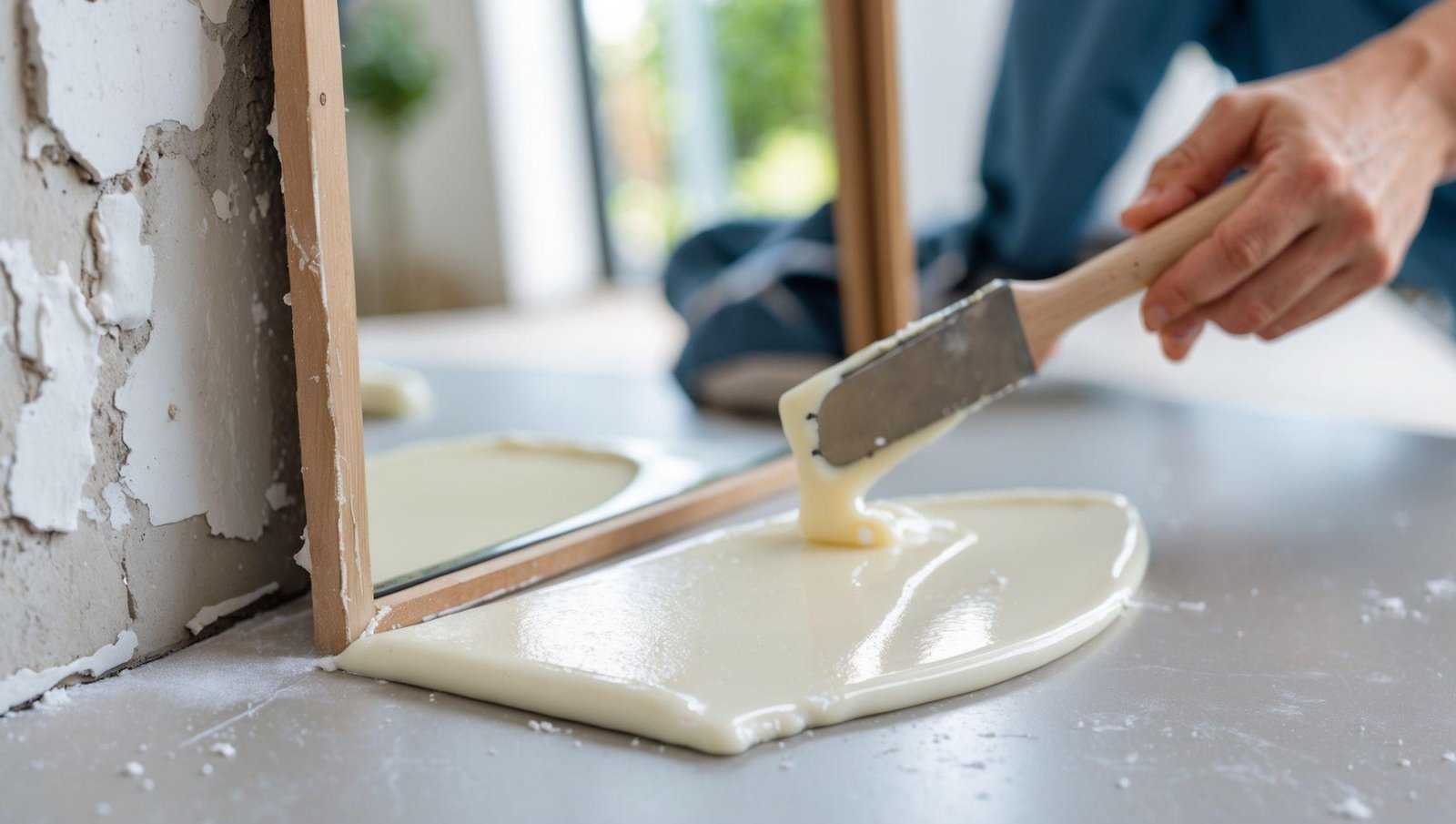
For heavier mirrors, plaster-friendly adhesives are your best option. These adhesives are designed to bond securely to plaster without damaging the wall. They are perfect for too heavy mirrors for adhesive hooks or strips.
What Mirror’s for in a Plaster-Specific Adhesive: When choosing an adhesive, make sure it’s plaster. Epoxy adhesives and construction adhesives are often the best choice. These adhesives can handle the weight of heavier mirrors without harming the wall.
Step-by-Step Process:
- Apply the Adhesive: Apply the adhesive to the back of the Mirror or the mounting hardware. Follow the instructions carefully to get the best bond.
- Press the Mirror to the Wall: After applying the adhesive, press the Mirror against the wall and hold it for a few seconds.
- Allow to Set: Let the adhesive set before you hang anything on it. Some adhesives may require up to 24 hours to fully cure.
Best Adhesives for Heavy Mirrors: When looking for adhesives for heavy mirrors, ensure they are rated for construction use. Epoxy adhesives are often your best bet.
When to Use This Method: Use plaster-friendly adhesives for mirrors weighing over 16 pounds or when you need a strong bond.
Method 4: Using Tension Rods for Placement
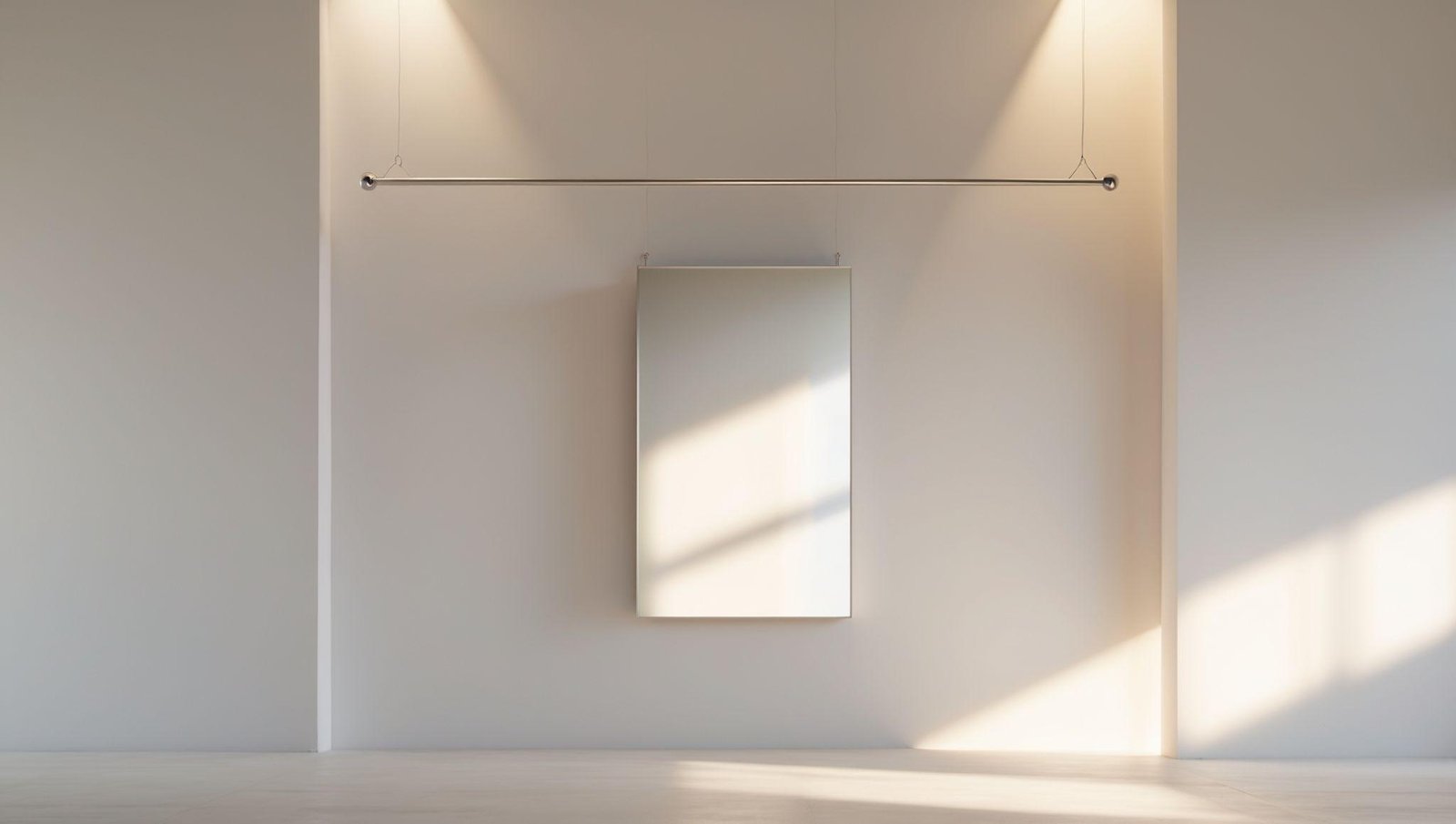
Tension rods are a creative solution for hanging larger mirrors without nails. While most people think of them as shower curtain accessories, they can also work wonders for mirrors. A tension rod holds the Mirror in place by creating a sturdy support between two walls.
How It Works: The tension rod is placed between two walls, creating a horizontal surface to rest your Mirror. The Mirror will stay in place without any drilling or nails.
Step-by-Step Process:
- Install the Tension Rod: Install the tension rod across the area where you want to hang your Mirror. Tighten it so that it fits securely between the two walls.
- Rest the Mirror on the Rod: Gently place your Mirror on top of the rod. The tension in the rod will keep the Mirror from falling.
- Check for Stability: Make sure the rod is tight, and the Mirror is stable. If it seems unstable, increase the tension or adjust the Mirror.
When to Use This Method: This method is excellent for large mirrors or heavy objects that need additional support. It’s a simple, no-drill solution that works surprisingly well.
How to Hang a Heavy Mirror on a Plaster Wall Without Nails
You must be extra careful about weight distribution when hanging a heavy mirror without nails. Use multiple hooks or strips to distribute the weight evenly. This will ensure that the Mirror is securely mounted and won’t fall.
Choosing the Right Adhesive or Hook: For heavier mirrors, choose adhesive hooks or picture hanging strips rated for the weight of the Mirror. Make sure they are plaster-friendly to avoid damaging the walls.
Step-by-Step Process for Heavy Mirrors:
- Use Multiple Hooks: For extra support, use two adhesive hooks or multiple strips to help distribute the weight.
- Ensure Even Weight Dispenser Make sure the weight is spread across the Mirror.
- Check the Placement: After hanging the Mirror, ensure it’s level and stable. Test the Mirror by gently pushing it to ensure it is securely in place.
Safety Tips: Always check the adhesive products’ weight rating to ensure they are strong enough for your Mirror. If in doubt, use more hooks or strips.
What Is the Most Secure Way to Hang a Heavy Mirror Without Nails?
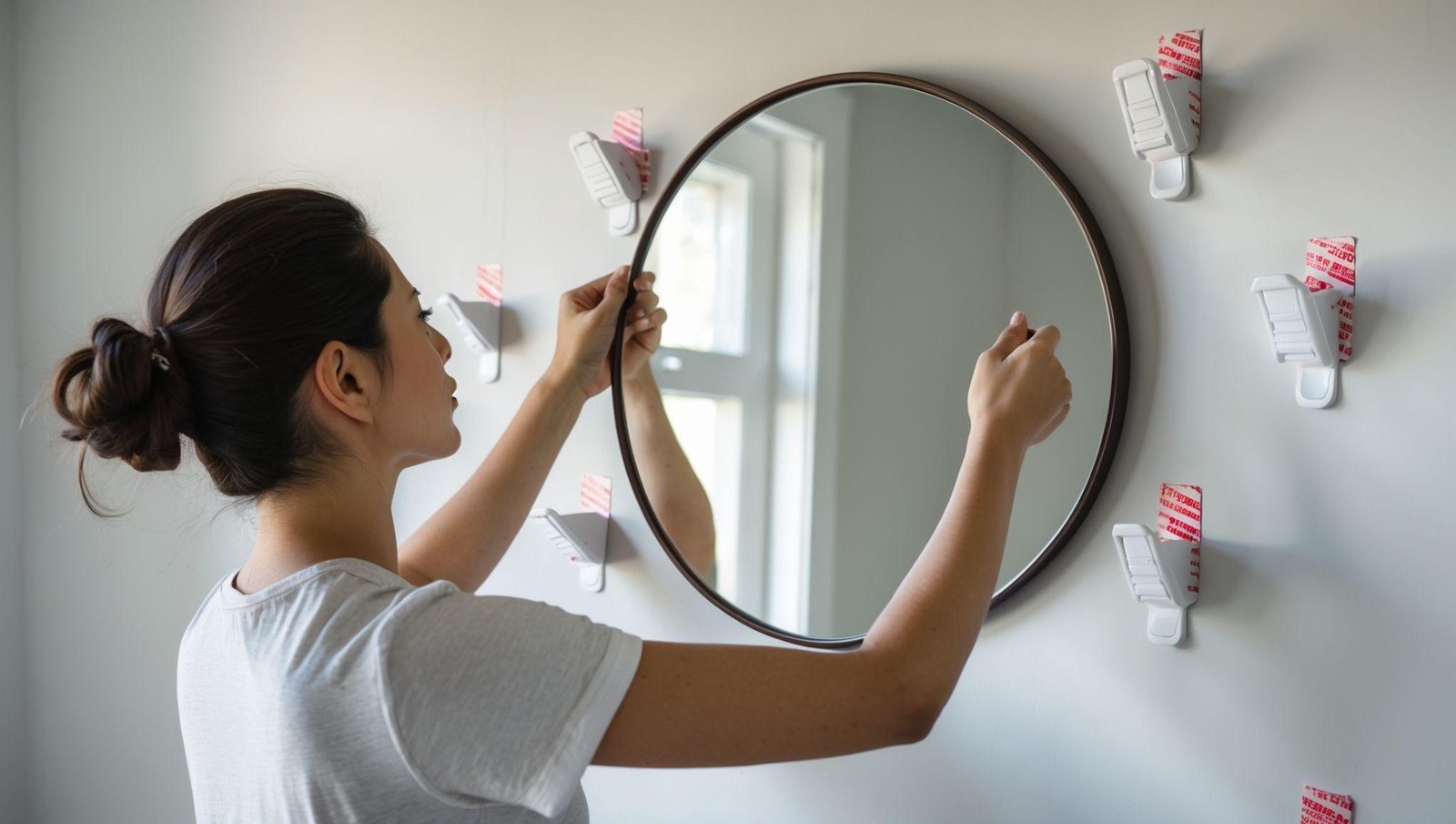
The most secure way to hang a heavy mirror without nails is using multiple heavy-duty adhesive hooks or picture hanging strips. These will provide extra support to distribute the weight evenly. You could also use wall anchors for added security, although this would require a small hole in the plaster.
What Is the Best Adhesive for Heavy Mirrors?
Epoxy-based adhesives and construction-grade adhesives are the best for heavy mirrors. These adhesives are designed for plaster and can handle the weight of large mirrors without damaging the wall.
Conclusion
Hanging mirrors on plaster walls without nails is entirely possible. With the right tools and techniques, you can safely and securely hang any mirror, big or small. Whether using adhesive hooks, picture hanging strips, or plaster-friendly adhesives, each method ensures that your Mirror stays up without causing any damage. Choose the method best suits your Mirror’s size and weight, and you’ll have a hassle-free hanging experience.
